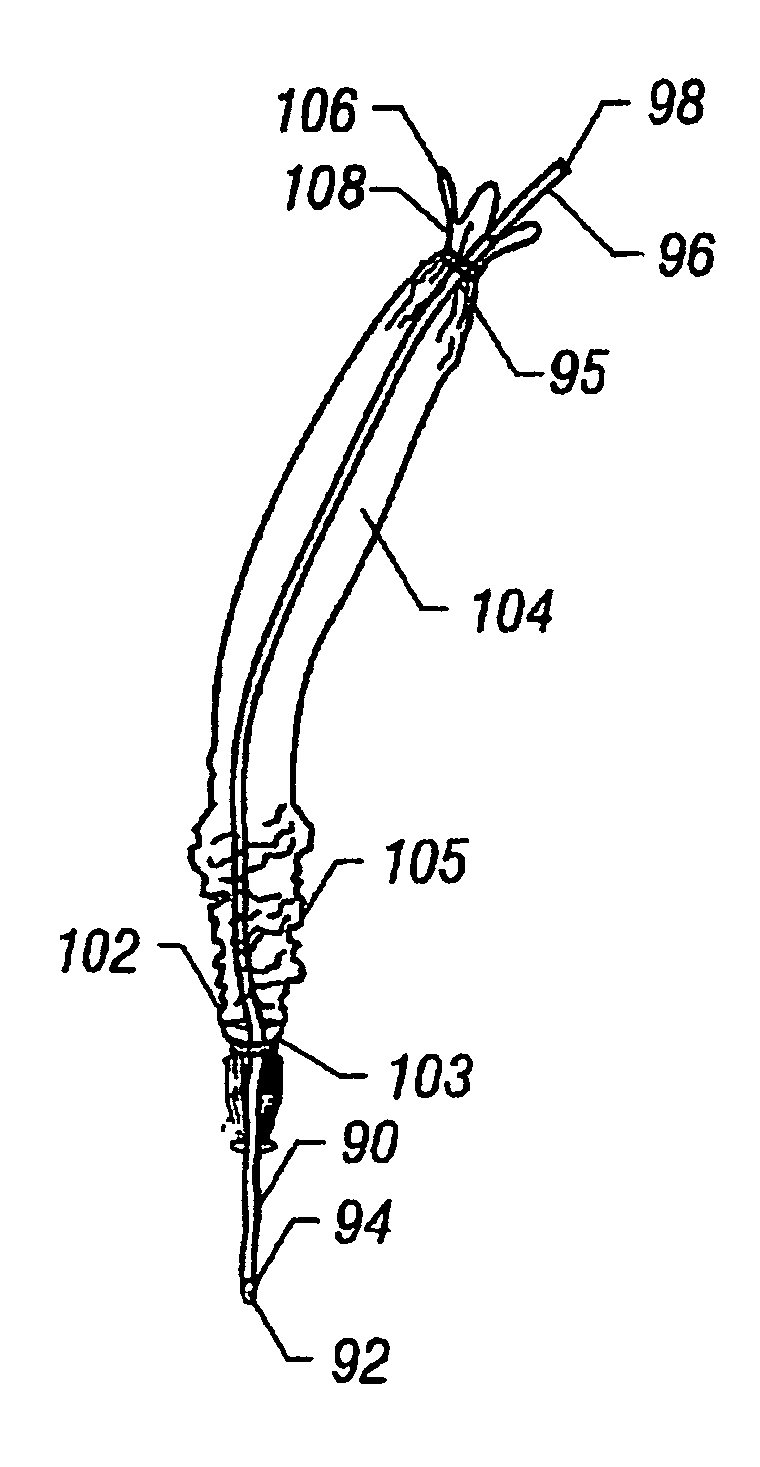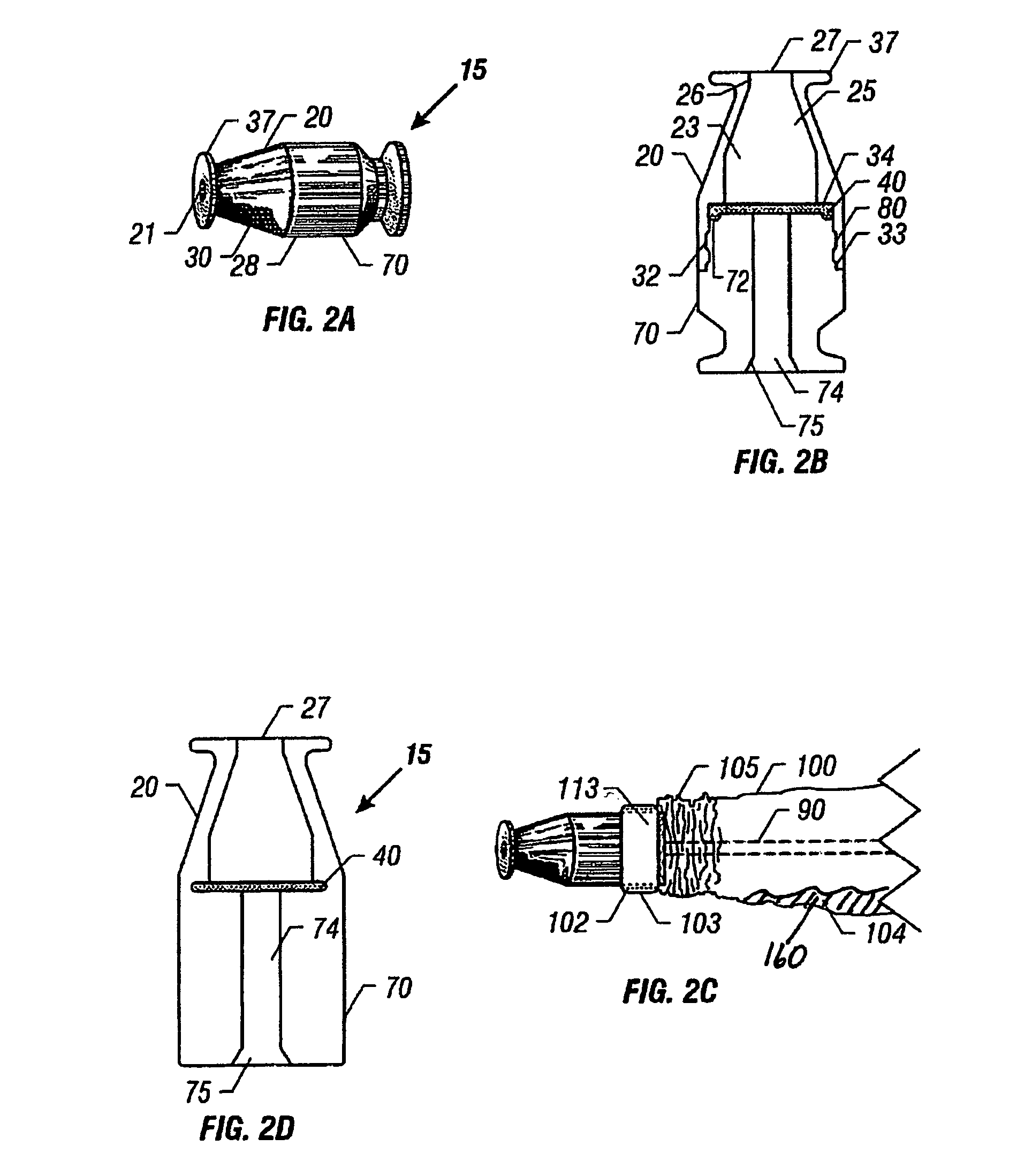Catheterization assembly
a technology of catheter assembly and assembly plate, which is applied in the direction of suction device, intravenous device, wound drain, etc., can solve the problems of long-term use of indwelling catheter, lack of satisfactory catheterization kit, and individual need for intermittent catheterization, so as to and prevent the spillage of wetting liquid. high lubricating or slippery
- Summary
- Abstract
- Description
- Claims
- Application Information
AI Technical Summary
Benefits of technology
Problems solved by technology
Method used
Image
Examples
Embodiment Construction
[0050]The present invention serves to address the shortcomings of conventional devices and assemblies on the market, and provide additional advantages and features not available to such conventional products. Referring to FIG. 1A, catheter device 10 includes a catheter introducer 15, a hydrophilic catheter 90, a thin-walled pliable sheath 100, and first and second sheath closures 112, 120. Optionally, a urine collection bag is pre-attached or can be attached by the user (FIGS. 8 and 9). Catheter 90 is preferably similar to, or the same as, a conventional hydrophilic urinary catheter, or it may be of any suitable hydrophilic urinary catheter design. All, or at least the portion of the catheter that is to be introduced into the urethra, is either coated with a hydrophilic material (e.g., PVC catheter coated with polyvinylpyrrolidone (PVP)), or is formed from a suitable hydrophilic material (e.g., silicone). In either case, the catheter is referred to as a “hydrophilic catheter” in thi...
PUM
 Login to View More
Login to View More Abstract
Description
Claims
Application Information
 Login to View More
Login to View More - R&D
- Intellectual Property
- Life Sciences
- Materials
- Tech Scout
- Unparalleled Data Quality
- Higher Quality Content
- 60% Fewer Hallucinations
Browse by: Latest US Patents, China's latest patents, Technical Efficacy Thesaurus, Application Domain, Technology Topic, Popular Technical Reports.
© 2025 PatSnap. All rights reserved.Legal|Privacy policy|Modern Slavery Act Transparency Statement|Sitemap|About US| Contact US: help@patsnap.com



